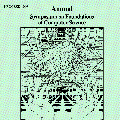The importance of classifying connections in large graphs has been the motivation for a rich line of work on distributed subgraph finding that has led to exciting recent breakthroughs. A crucial aspect that remained open was whether deterministic algorithms can be as efficient as their randomized counterparts, where the latter are known to be tight up to polylogarithmic factors. We give deterministic distributed algorithms for listing cliques of size $p$ in $n^{1 - 2/p + o(1)}$ rounds in the \congest model. For triangles, our $n^{1/3+o(1)}$ round complexity improves upon the previous state of the art of $n^{2/3+o(1)}$ rounds [Chang and Saranurak, FOCS 2020]. For cliques of size $p \geq 4$, ours are the first non-trivial deterministic distributed algorithms. Given known lower bounds, for all values $p \geq 3$ our algorithms are tight up to a $n^{o(1)}$ subpolynomial factor, which comes from the deterministic routing procedure we use.
翻译:在大图表中对连接进行分类十分重要,这是在分布式子图调查结果上开展大量工作,导致最近令人兴奋的突破的动力。一个关键的方面是,确定式算法能否像随机对应算法一样有效,因为据知后者与多元数因素相近。我们给出确定式分布式算法,将大小为美元1 - 2/p + o(1)} 的圆形算法列入到\ congest 模型中。对于三角形,我们1+3+1+o(1)} 美元圆形复杂度比先前的艺术状态($N+2+3+o(1)}) 高。对于大小为$+4的确定式算法来说,我们的确定式算法是第一个非确定式确定式分布式算法。鉴于已知的下限,对于所有值 $+3 ge 3,我们计算法的基值都紧凑到 $nço(1)} 亚质学因子因素,而该因素来自确定式路程程序。



